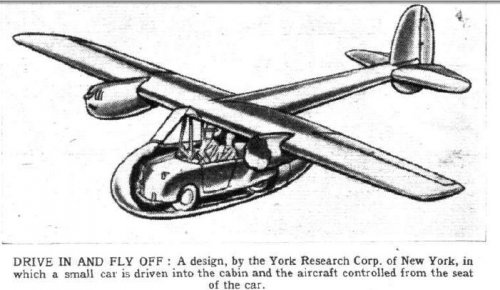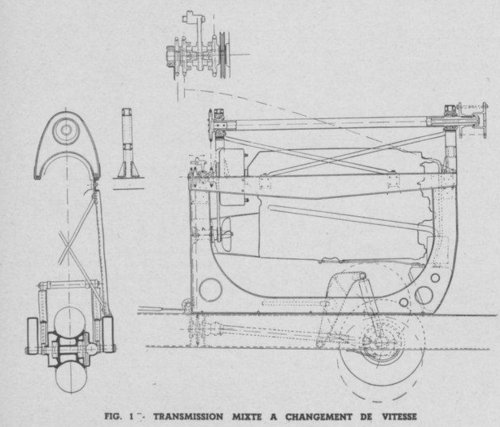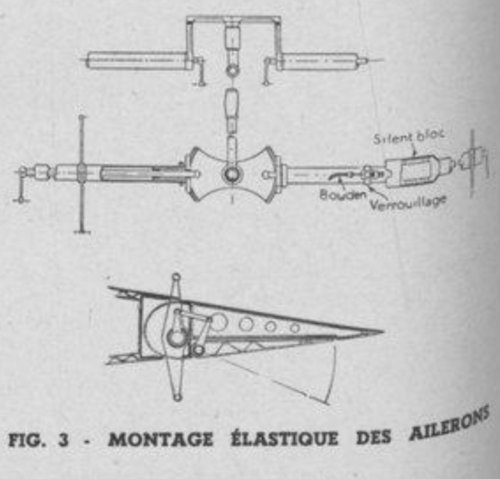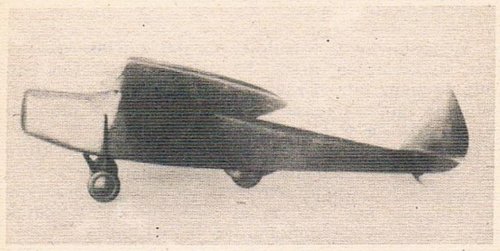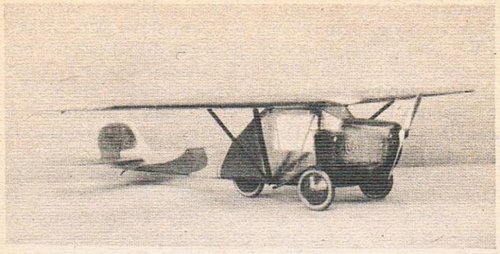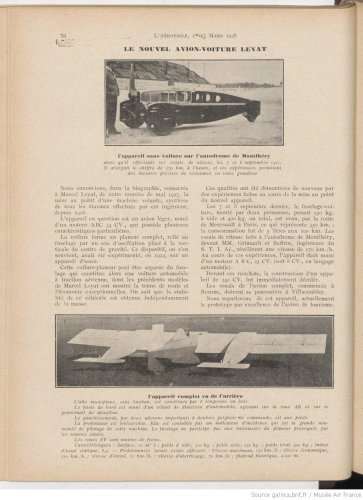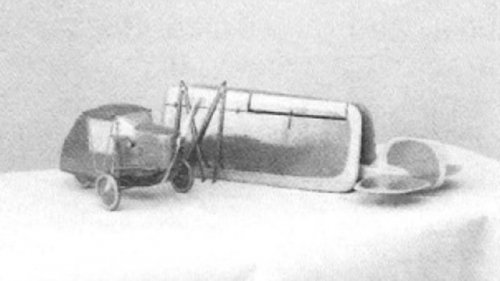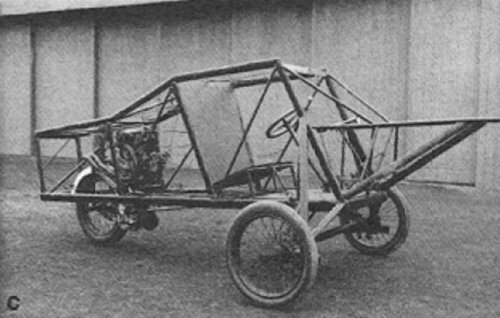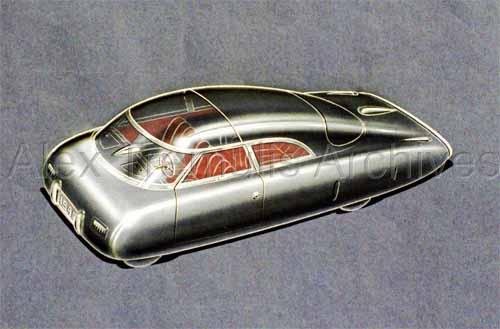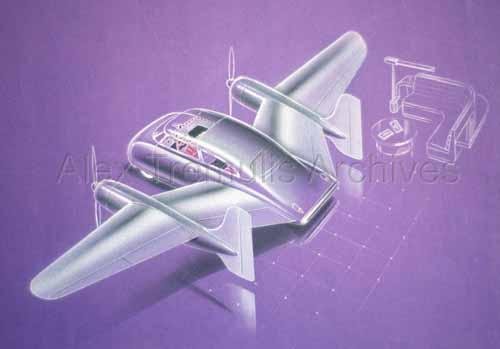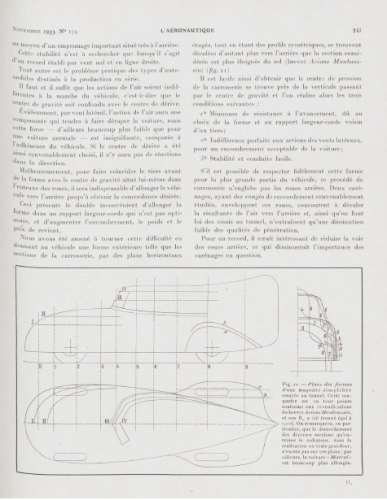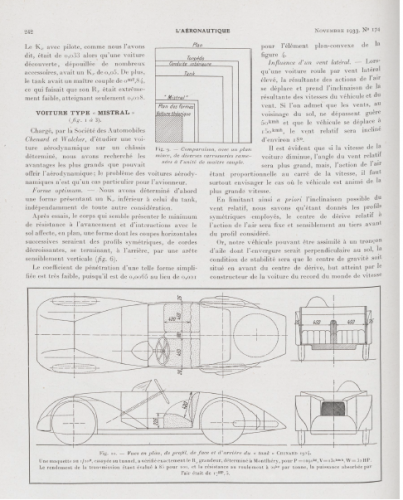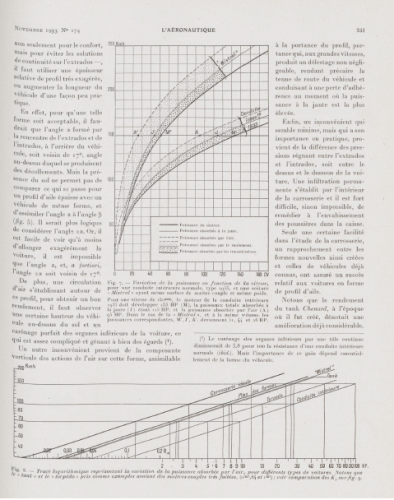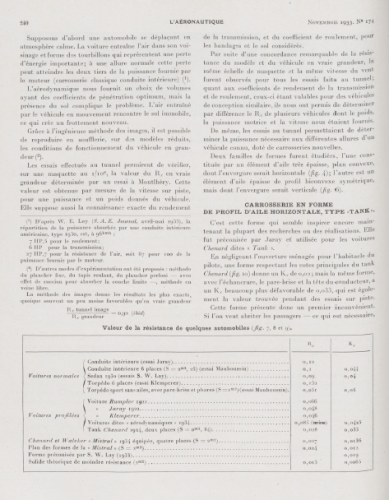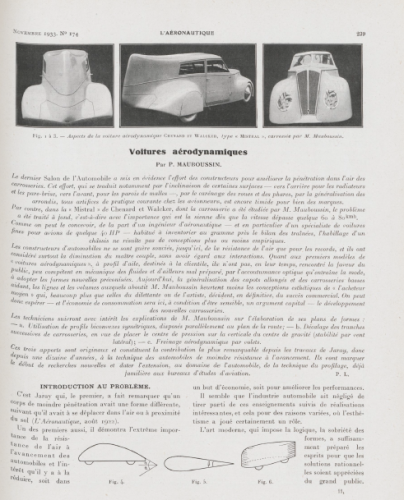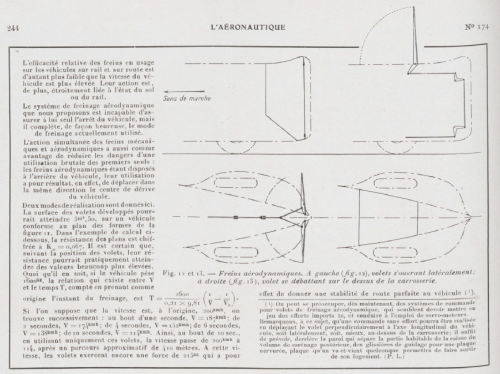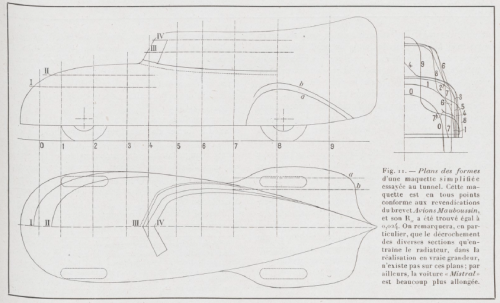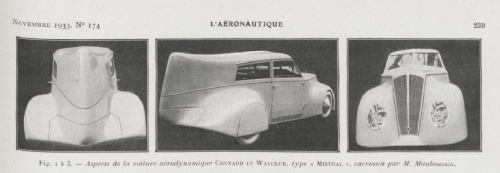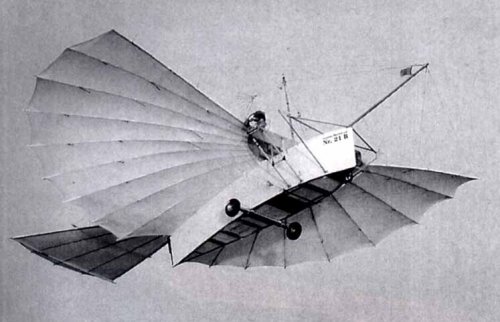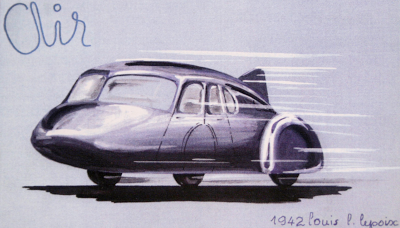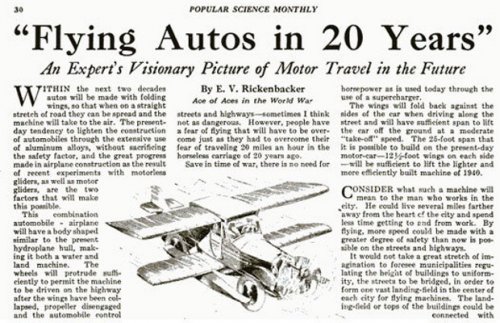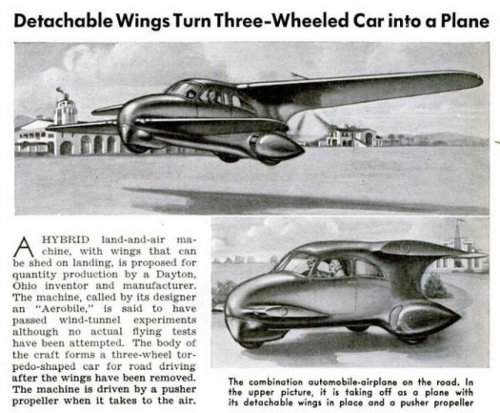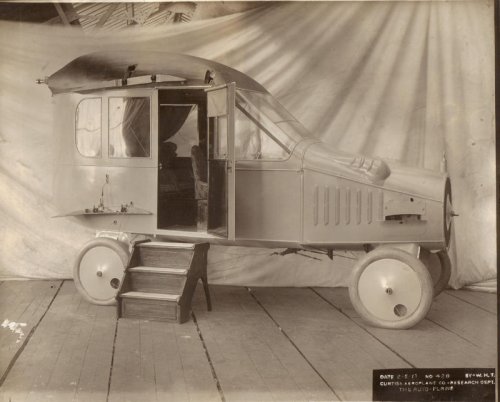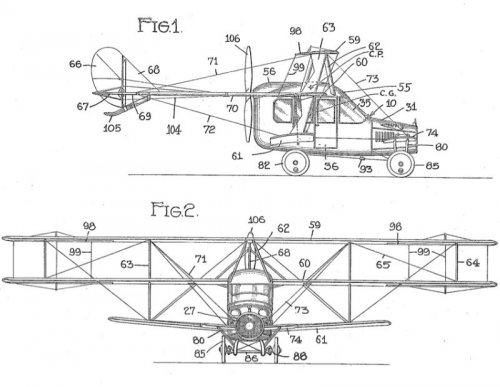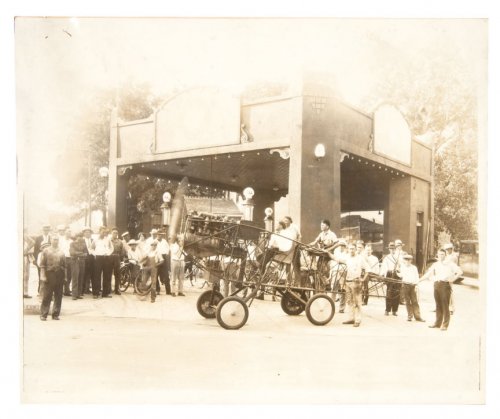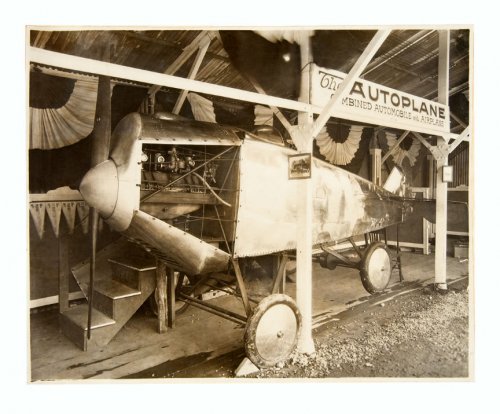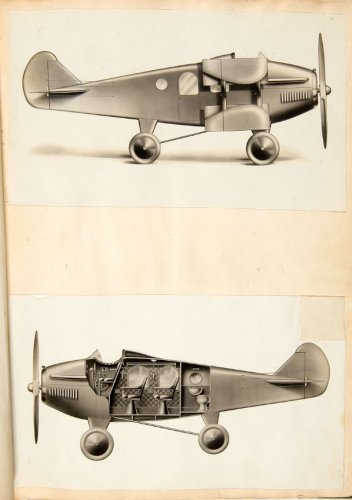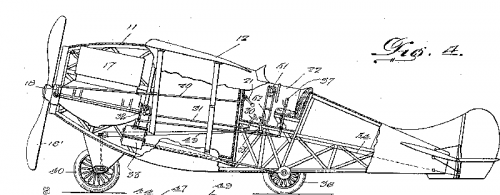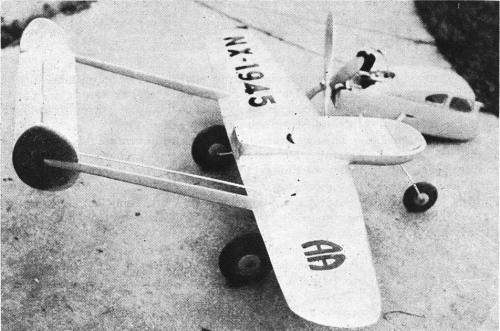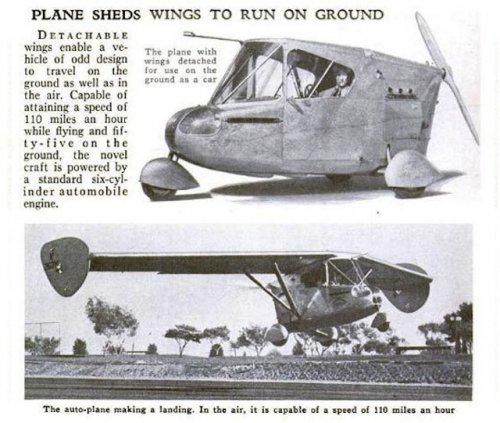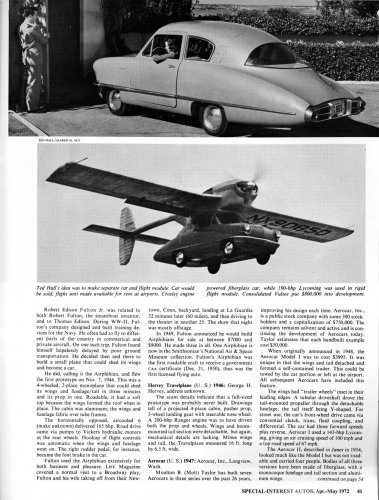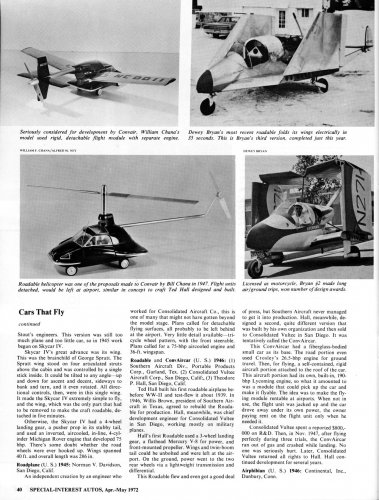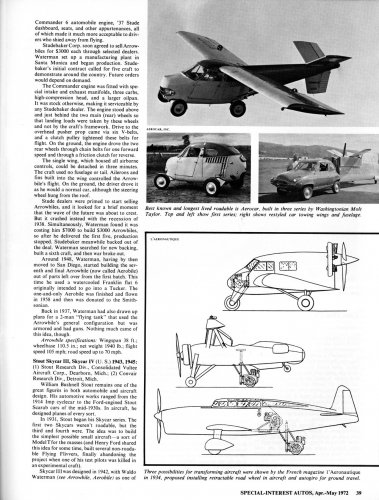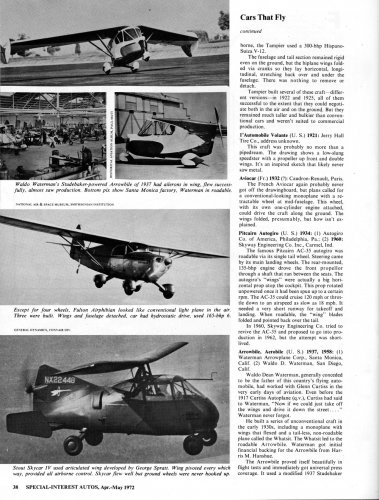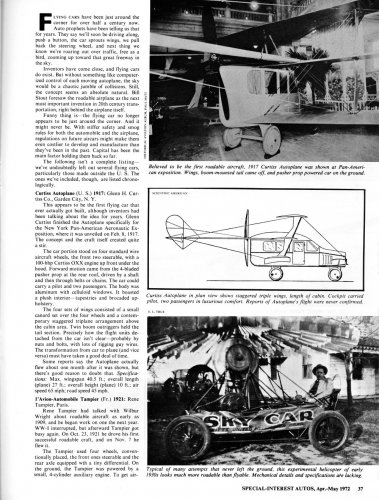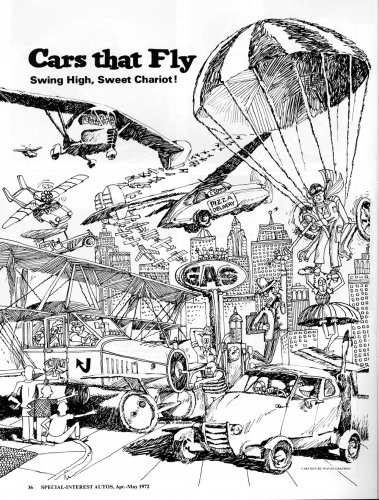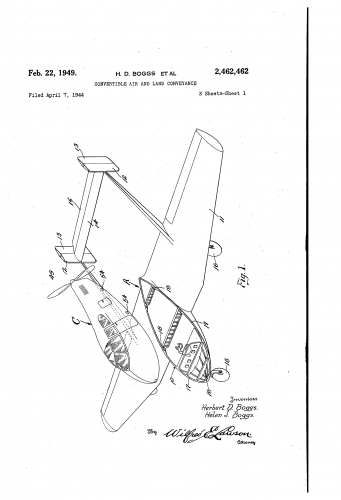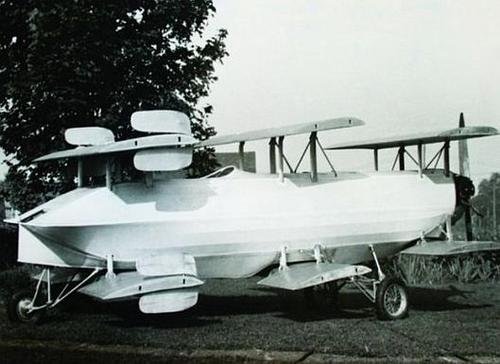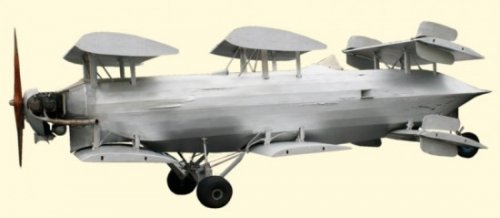An early flying car was the Whitehead No.21 of 1901, more notorious for its controversial challenge to the Wright Flyer as the first heavier-than-air machine to fly under its own power. It had two engines, with the road wheels driven by one and the propeller by the other. On takeoff both were coupled together to drive the propeller. The wings were collapsible with radial "bat-wing" ribs supporting a fabric surface and were folded back alongside the fuselage for road travel. It seems to have had a patent wing-warping system for flight control, powered by compressed air.
Sadly there is so much sound and fury on both sides of the who-flew-first debate that it is difficult to say whether it did actually fly, or even hop. The best I can determine, it could certainly chunter down the road, most probably hop into an assisted glide and may even have sustained flight, but the flight control system did not work and Whitehead said that he barely avoided crashing into an obstacle by leaning hard over to one side.
His No.22, which he built in 1902, had a rudder and twin propellers with differential power control, and was claimed to have flown full circle.
John Brown came across the Whitehead machines while researching the history of flying cars at the Smithsonian. His flying car website is at http://www.roadabletimes.com/ but from the look of it he seems to have dropped his flying car research when the first-to-fly furore erupted, not least because the site does not mention Whitehead. For that we have to suffer the battle-weariness of his http://www.gustave-whitehead.com/ (a useful resource from the opposite side of the debate is on Carrol Grey's web site at http://www.flyingmachines.org/gwinfo/ ). I wonder if that research monograph will ever get published.

